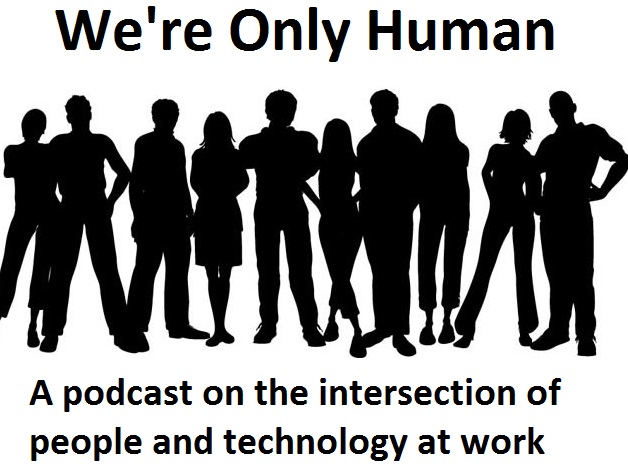 Carol and Teri. I’ll never forget them as long as I live.
Carol and Teri. I’ll never forget them as long as I live.
These two women were amazing. Always bright and cheerful, I couldn’t help but smile as well any time they were around. And they taught me an incredible amount not just about the technical aspects of the job I did at the time, but also about interoffice politics (how to avoid them) workplace dynamics (how to read others’ emotions) and more.
Carol was the quiet one. She kept to herself, did great work, and didn’t bother anyone. However, she was the first to send you a message when she thought you needed a pick-me-up.
Teri was definitely more vocal, but she also had a way about her that just made me smile. She was very interested in the work I was doing and wasn’t afraid to give me pointers on how to improve.
Oh, and neither of them could hear. Yes, while both of these wonderful ladies were deaf, they still had an amazing impact on me from the earliest days of my career.
With that in mind, I reached out to Bobbie LeMere at Tangram to give me some practical advice for employers looking to make a concerted effort to hire more deaf or hearing-impaired individuals. LeMere says that 80 percent of people who are deaf or hard of hearing do not work, which paints a dismal picture of today’s work environment. Her tips below give employers ideas on how to support these workers and give this population a fighting chance to succeed in the workforce today.
Practical Tips for Hiring and Working with Deaf Individuals
- Use on-site interpreters for interviews and meetings—While technology has made it possible
for those who are hearing and those who are deaf to communicate, through apps,
videophones, text messaging, and other methods, an on-site interpreter can best ensure that
all individuals are able to participate fully in the conversation. - Provide disability awareness and etiquette training to all employees—Training is an essential part of ensuring that your company is prepared to hire and integrate individuals with all types of disability in your workforce. Providing a forum for employees to learn about disabilities and to debunk the myths around disability will ultimately lead to a more cohesive and productive workplace where employees of all abilities are comfortable with each other.
- Hire individuals based on their skills and their ability to complete the essential functions of their job—Hiring someone for charity is just as inadvisable as not hiring someone because of misconceptions about disability. When interviewing someone with a disability, be sure to focus on their ability to complete the job. Don't make assumptions about what someone is able to do.
- Get buy-in from leadership—If your organization doesn't have support from the top, disability inclusion is less likely to succeed. Be sure that all levels of an organization understand the importance and benefits of disability inclusion so that all employees feel valued and can thrive.
- Find the right accommodations—Ask the person what accommodations would work best for them. There are many technological tools that can help a person who is deaf or hard of hearing communicate, such as:
- Video Remote Interpreting (VRI)—this can be of use in one-on- one meetings, basic conversations, short meetings or exchanges, or meetings where the primary goal is to sign paperwork.
- Video Relay Services (VRS): this allows individuals who are deaf or hard of hearing to communicate over video telephones with those who are hearing in real-time via a sign language interpreter.
- Video Phone Technology—these web camera videophone and videoconferencing systems can serve as complements to personal computers and are connected to other participants by computer and VolP networks (ex. Skype).
- Other tools—dry erase boards, notepads, text messaging, apps, Boogie Board, and other tools can be useful for very simple conversations or exchanges. You could also learn basic American Sign Language to help bridge the communication gap.
- According to a survey conducted by the Job Accommodation Network, most employers report no cost associated with accommodations. The typical one-time cost for accommodations is around $500.
- Safety First—Are your emergency procedures inclusive of those with disabilities? For those who are deaf and hard of hearing, you may choose to install special alert lights or implement a buddy system to inform employees when there is an emergency. If an employee who is deaf or hard of hearing faces away from an entrance or doorway in their workspace, use a mirror so they can easily see when they have visitors or when someone is approaching them from behind.
I hope these tips and ideas help you and your own team to be more inclusive of your hearing impaired workers!

 The idea of a “gig” isn’t anything new, but the concept of using gig workers as an alternative source of talent certainly is. More companies are starting to realize that getting a job done doesn’t always have to mean creating a requisition, posting a job, interviewing candidates, and making an offer. In the case of some new applications on the market, companies can bring talent to their front door at the veritable push of a button. Yes, really.
The idea of a “gig” isn’t anything new, but the concept of using gig workers as an alternative source of talent certainly is. More companies are starting to realize that getting a job done doesn’t always have to mean creating a requisition, posting a job, interviewing candidates, and making an offer. In the case of some new applications on the market, companies can bring talent to their front door at the veritable push of a button. Yes, really.